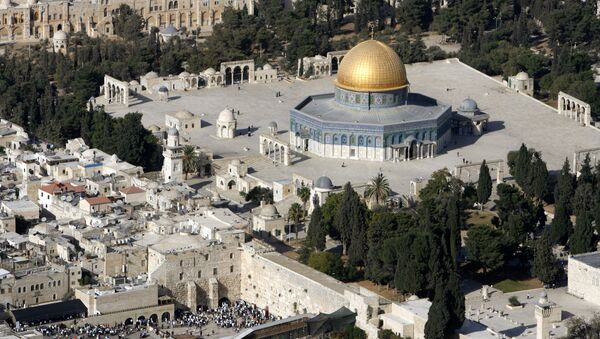An ancient temple complex discovered near Jerusalem sheds more light on the Holy City but at the same time raises new questions, Fox News reports, referring to an opinion from Tel Aviv University scientists.
University archaeologists jointly with their colleagues from the Israel Antiquities Authority unearthed the Tel Motza temple complex and a structure beneath it in 2012. The temple was named after the Biblical city of Motza located in the kingdom of Judah.
In the structure’s area archaeologists discovered human and horse-shaped figurines in the shape of animals and people as well as a stand decorated with lions and sphinxes that researchers suggested could have been used by an ancient cult.
Rare archaeological evidence from the time of Hezekiah and Isaiah at Tel Motza. Photo Israel Antiquities Authority pic.twitter.com/5x9Zycws
— United With Israel (@UniteWithIsrael) December 27, 2012
Additionally, the archaeologists found a stone altar, a stone offering table and a pit filled with ash and animal bones in the area.
They argued that the discoveries prove that there could be other “sanctioned” temples apart from Solomon’s renowned shrine in Jerusalem, which was destroyed during the Babylonian conquest of the Holy City between 587 and 586 B.C.
Fox News quoted Tel Aviv University doctoral student Shua Kisilevitz as wondering in a statement whether a “monumental temple really existed in the heart of Judah, outside Jerusalem” and whether “Jerusalem knew about it?”
“If so, could this other temple possibly have been part of the Judahite administrative system? The Bible details the religious reforms of King Hezekiah and King Josiah, who consolidated worship practices to Solomon’s Temple in Jerusalem, and eliminated cultic activity beyond its boundaries”, Kisilevitz asdded.
He was echoed by Tel Aviv University Professor Oded Lipschits, who insisted that “despite the biblical narratives describing Hezekiah’s and Josiah’s reforms, there were sanctioned temples in Judah in addition to the official temple in Jerusalem”.
“Our discoveries thus far have fundamentally changed the way we understand the religious practices of Judahites”, he pointed out.

